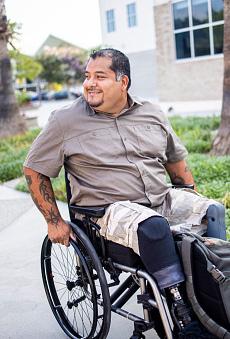
1 minute read
CONSIDERATIONS FOR MESSAGING
When developing messages for people with disabilities, consider the following: ο Use respectful and inclusive language that recognizes the individual as a person, just like everyone else. This means using person-first terminology and leading with the individual rather than the disability, as in saying “a person with a disability” or “participants with disabilities” instead of “a disabled person.” Avoid using terminology with negative connotations such as “confined to a wheelchair,” “handicapped,” “physically challenged,” or “the disabled.” ο Engage disability organizations as partners to understand the most respectful and effective ways in which they communicate with persons with disabilities. ο Use culturally relevant person-first messages, graphics, and images—in terms of language and ethnicity—that are relatable to each person’s lived experience. ο Include images of an individual or individuals with disabilities in your messaging and written materials that will resonate with persons with disabilities in your community. ο Ensure that messages and graphics are accessible to persons with blindness or low vision. ο To ensure that persons with disabilities can access and understand your resources, provide clear messages and alternative/descriptive text as well as appropriate graphics, colors, fonts, and formatting. Online communications must meet guidance for Section 508 of the Rehabilitation Act of 1973, which ensures that information and communication technology is accessible and usable for individuals with disabilities. ο If using widgets to share health information electronically—such as buttons, dialog boxes, or drop-down menus—ensure that individuals with disabilities are receiving relevant information on their devices.

Advertisement
For additional information about working with persons with disabilities, please visit the resources highlighted below:
GENERAL HEALTH
Administration on Disabilities, Administration for Community Living
Disability Impacts All of Us, CDC
National Programs on Health Promotion for People with Disabilities, CDC
Disability and Health Overview, CDC

Disability and Diabetes, CDC
Disability and Health Data System, CDC Communicating With and About People With Disabilities, CDC
Building Healthy Inclusive Communities, National Center on Health, Physical Activity and Disability (NCHPAD)
Diabetes Prevention
Disability and Diabetes Prevention, CDC Prevent T2 for All, NCHPAD
Recruiting People with Disabilities, NCHPAD (YouTube)
Exercising With Diabetes and Secondary Conditions, NCHPAD








